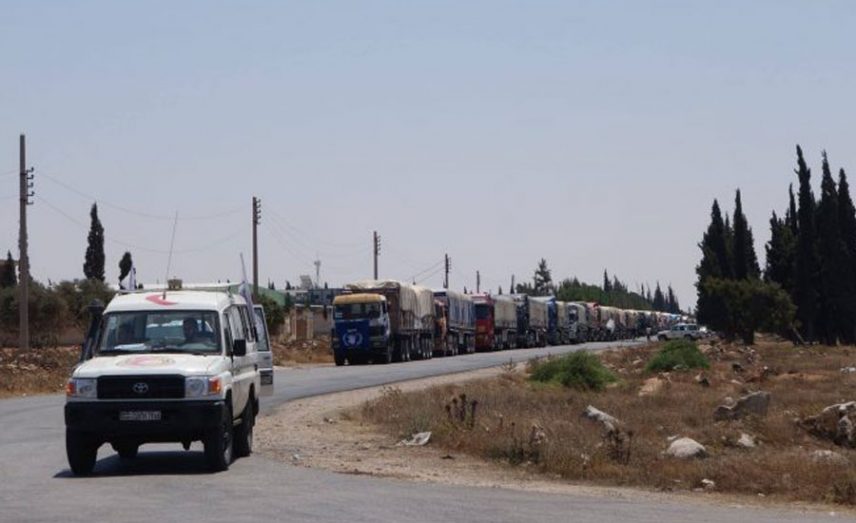About 300,000 people in the northern Homs countryside are waiting to see what benefits an expected “de-escalation” agreement between the Russians and the Syrian opposition may bring, after enduring a regime-led siege since the end of 2012.
The head of the Homs Media Center, Osama Abou Zaid, told Sada al-Sham that the regime and its allied militias have been working since 2012 on increasing pressure on the entire area through various means of siege. This has included the prevention of food, medical supplies and even animal feed from entering the area, as well as anything else that people might benefit from directly or indirectly. The regime has also deprived the citizens of various services through bombing with various types of weapons, which has contributed to a deterioration in the humanitarian situation to a disastrous level, with families in the Homs countryside suffering daily hardships from a lack of food and medicine.
Abou Zaid said that “the northern countryside of Homs has lost many people as a result of military operations. The population was about half a million before the war and has today dropped to about 300,000, distributed between about 59 towns and villages.”
There are about 32 medical facilities in the northern Homs countryside trying to offer medical and health services despite the lack of capabilities and the absence of specialized staff and medicine in areas targeted militarily by the regime.
Among the means used by the regime to crush the Syrians and break their will, Abou Zaid points to “the destruction of infrastructure for the area, from drinking water to sewage, and the total destruction of facilities and energy and electricity towers.”
In contrast, some humanitarian agencies and organizations have tried to lighten the burden of this destruction by offering simple assistance, such as drilling surface wells and setting up hand pumps to withdraw water, due to the lack of electrical water pumps and the scarcity of generators in the area — and, if it is available, securing the necessary fuel to operate them.
Abou Zaid added that within the policy of destruction, “The educational process has been stopped and schools have been bombed. The people of the northern countryside have been deprived of going to safe schools since 2012, and today the rate of illiteracy among children is more than 45 percent, and the rest could be prevented from obtaining basic or secondary degrees and therefore will not be able to continue their studies in college.”
In light of the suffocating siege and the policy of isolation which the regime has pursued for years, people of the Homs countryside have worked to establish institutions able to administer their affairs independently.
Local councils have been established to secure services for residents and they had an excellent and early experience in the field of the judiciary, whereby some revolutionary figures at the beginning of the liberation in both Talbiseh and Al-Rastan formed local courts. The new courts were effective, and then some lawyers and judges in the area proposed merging the courts into a single High Court, which has operated justly and with integrity.
This court has requested a security force from some of the rebel groups and divided it among the military and civilian police to carry out night patrols to maintain the area’s security against abusers.
This article was translated and edited by The Syrian Observer. Responsibility for the information and views set out in this article lies entirely with the author.


